Research
The research efforts in Professor Fang’s group concentrate on focusing wave physics into sub-wavelength scales. While the main efforts focus on new insights of design for advanced manufacturing of wave functional material and devices, his group also actively pursue the applications in the areas of energy conversion, communication, and biomedical imaging. His research also leads to over 16 patent applications on nano- and micro-fabrication, additive manufacturing, and imaging technologies with successful technology transfer to industry (e.g. Osram, BASF, Nissan) and startups.
Acoustics and Ultrasound
Exploring the broad applications of airborne acoustic and ultrasonic metamaterials
Acoustic absorbers for electric car noise
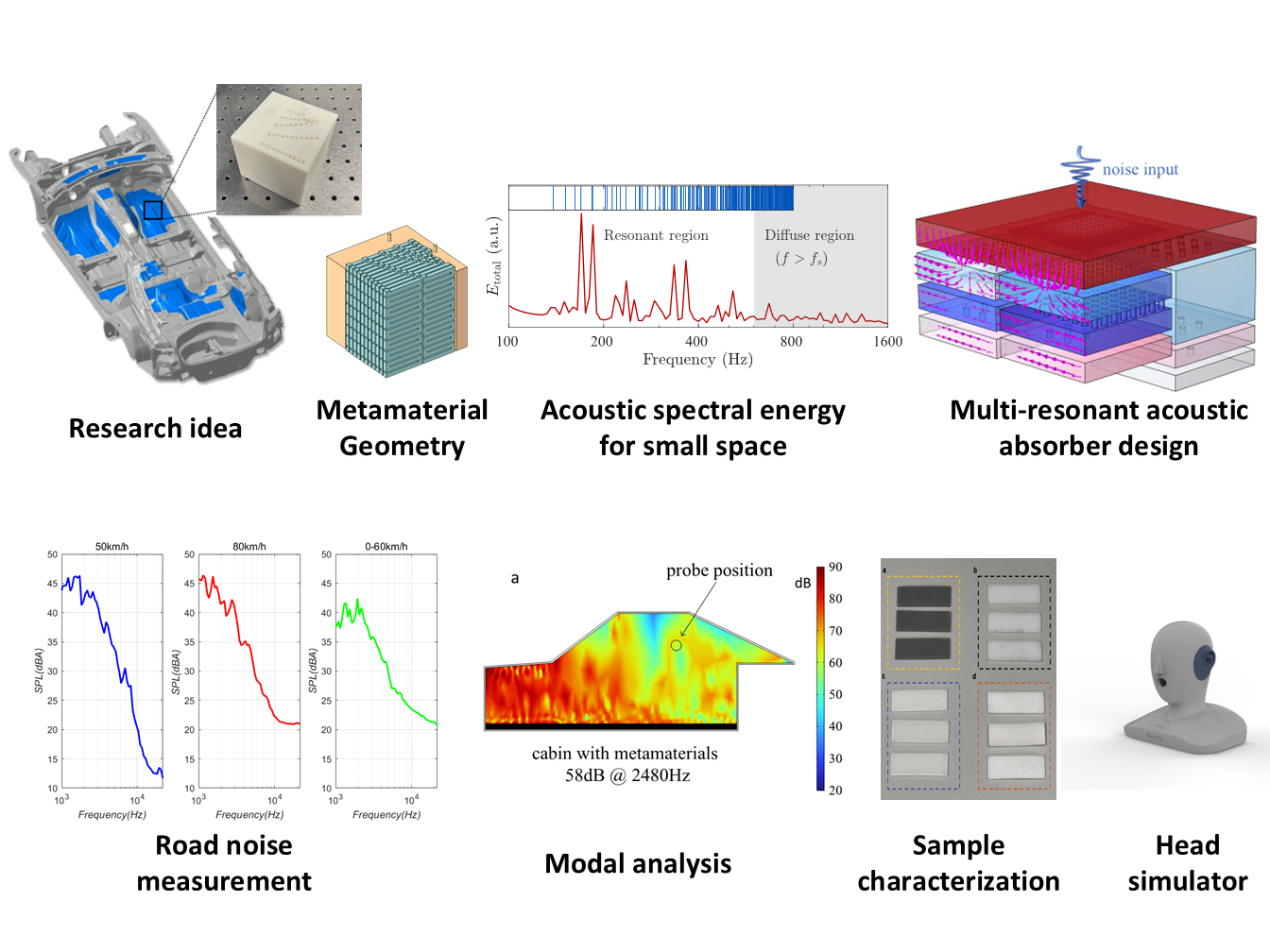
Research Highlights
- Customizing acoustic metamaterials for EV noise
- Reverberation time control in small space
- Sustainable and Lightweight design
Qu, S., et al., Reverberation time control by acoustic metamaterials in a small room. Build Environ (2023) Read more
Soft metalens for broadband ultrasonic focusing
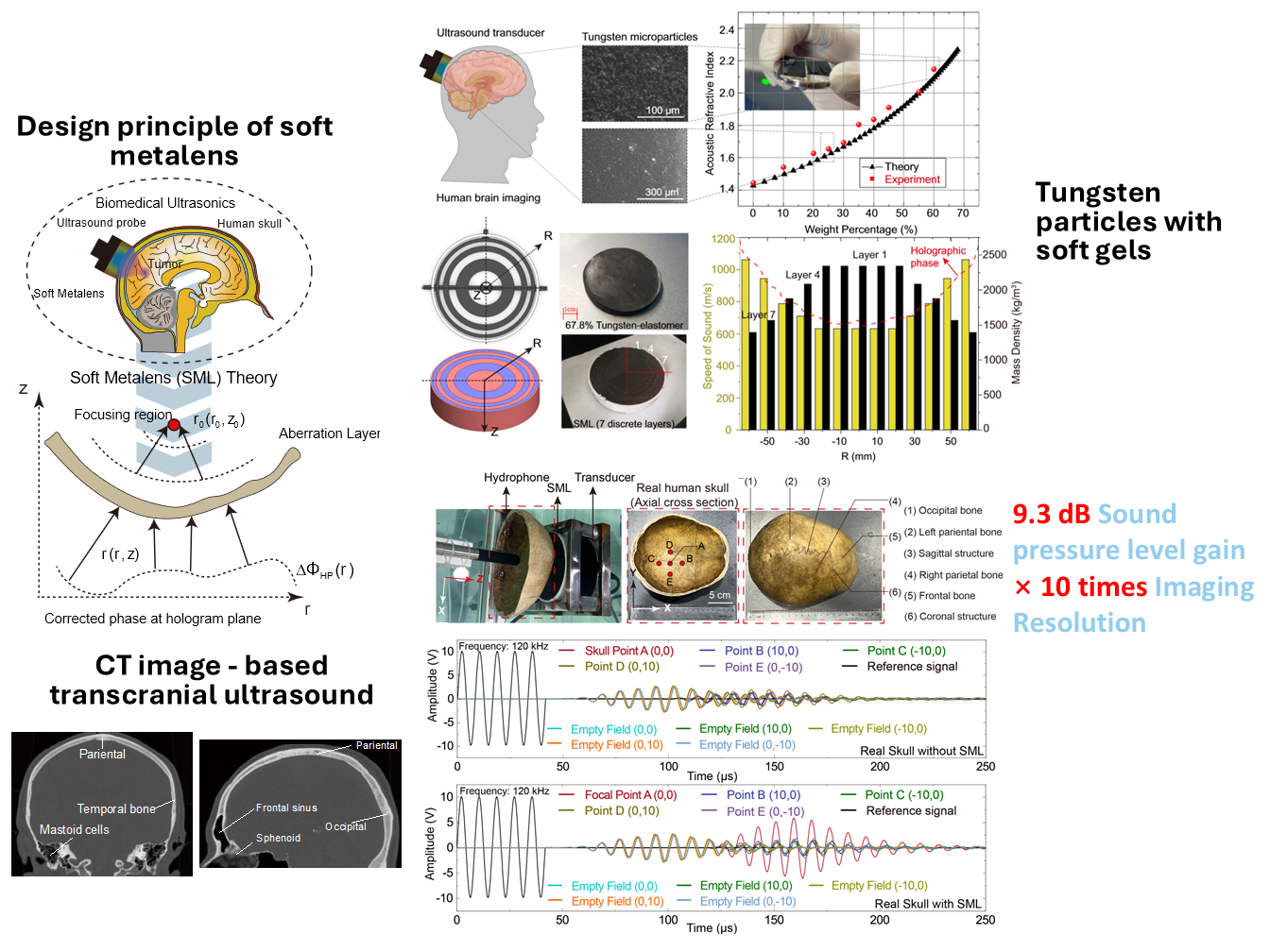
Dong, E., et al., Soft Metalens for Broadband Ultrasonic Focusing through Aberration Layers. Nat Commun (2025) Read more
Imaging and analytical microscopy
Cutting-edge imaging & analytical microscopy for advanced material research
Schlieren imaging of acoustic-enhanced heat transfer
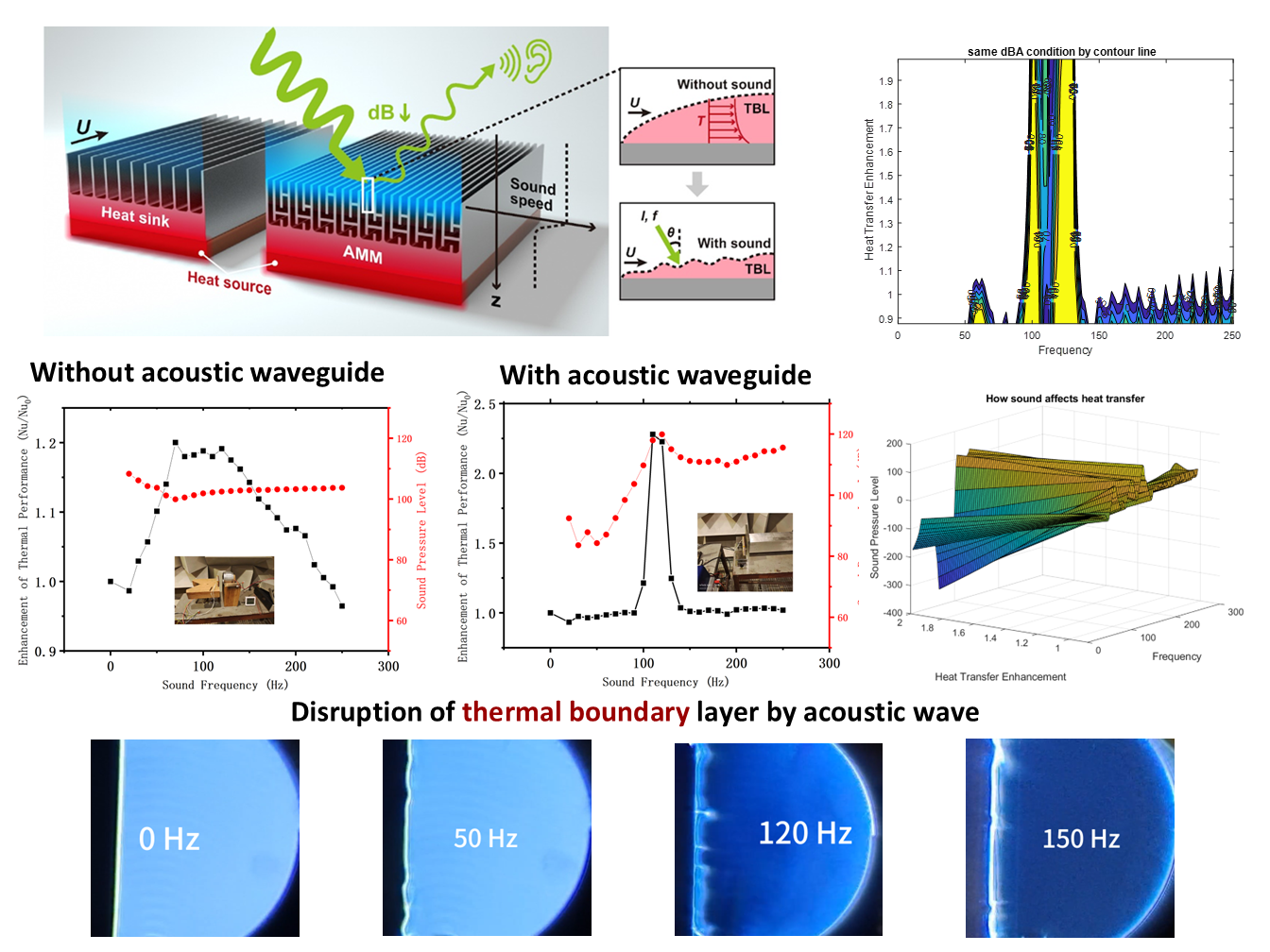
Meta matching layer for calcified plaques imaging
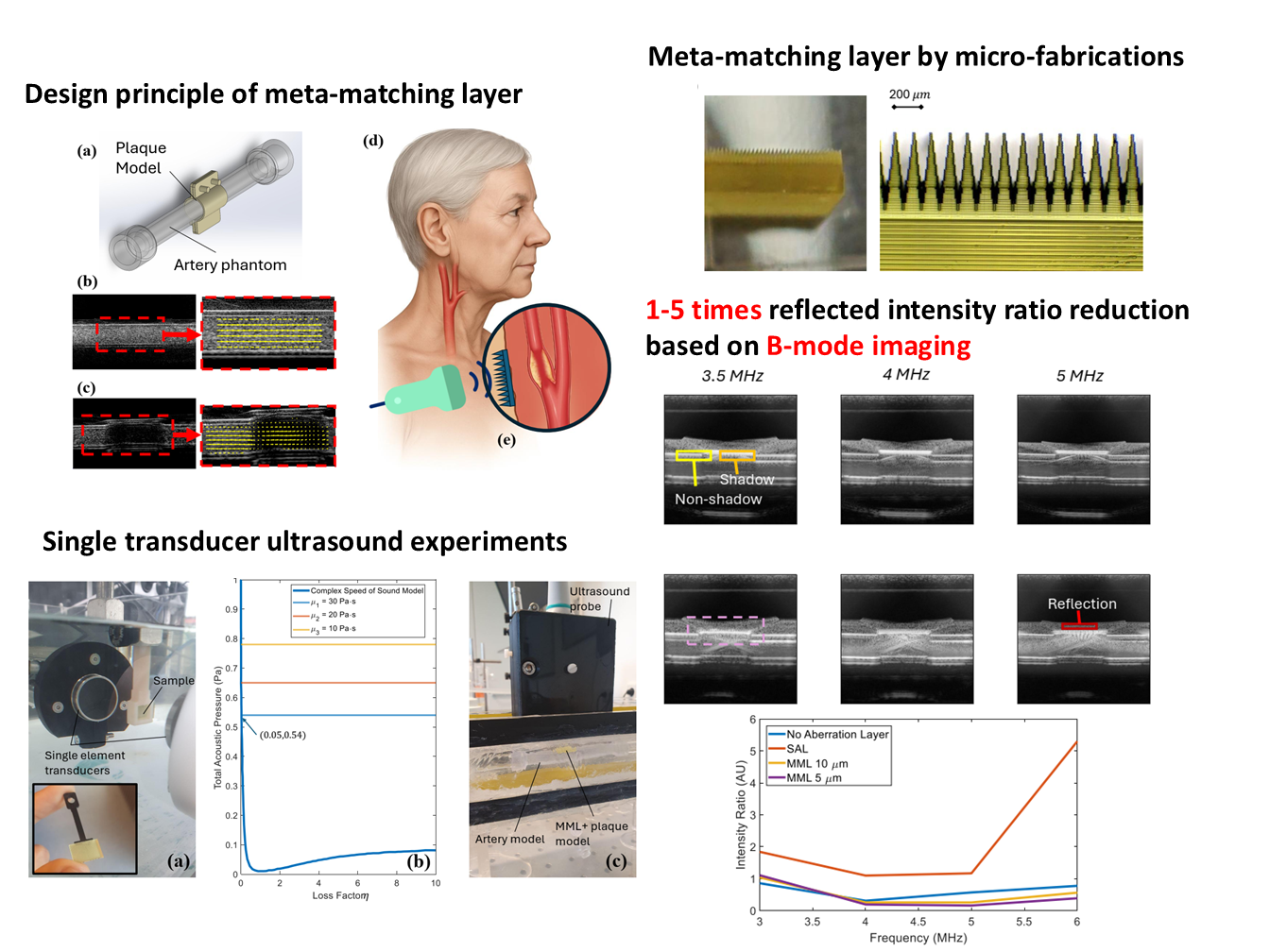
Ghanbarzadeh-Dagheyan, A., Dong, E., et al., A Meta Matching Layer to Image Behind Calcified Plaques. 2024 IEEE UFFC-JS, Taipei, Taiwan (2024) Read more
Polar material terminal atom identification by XPS
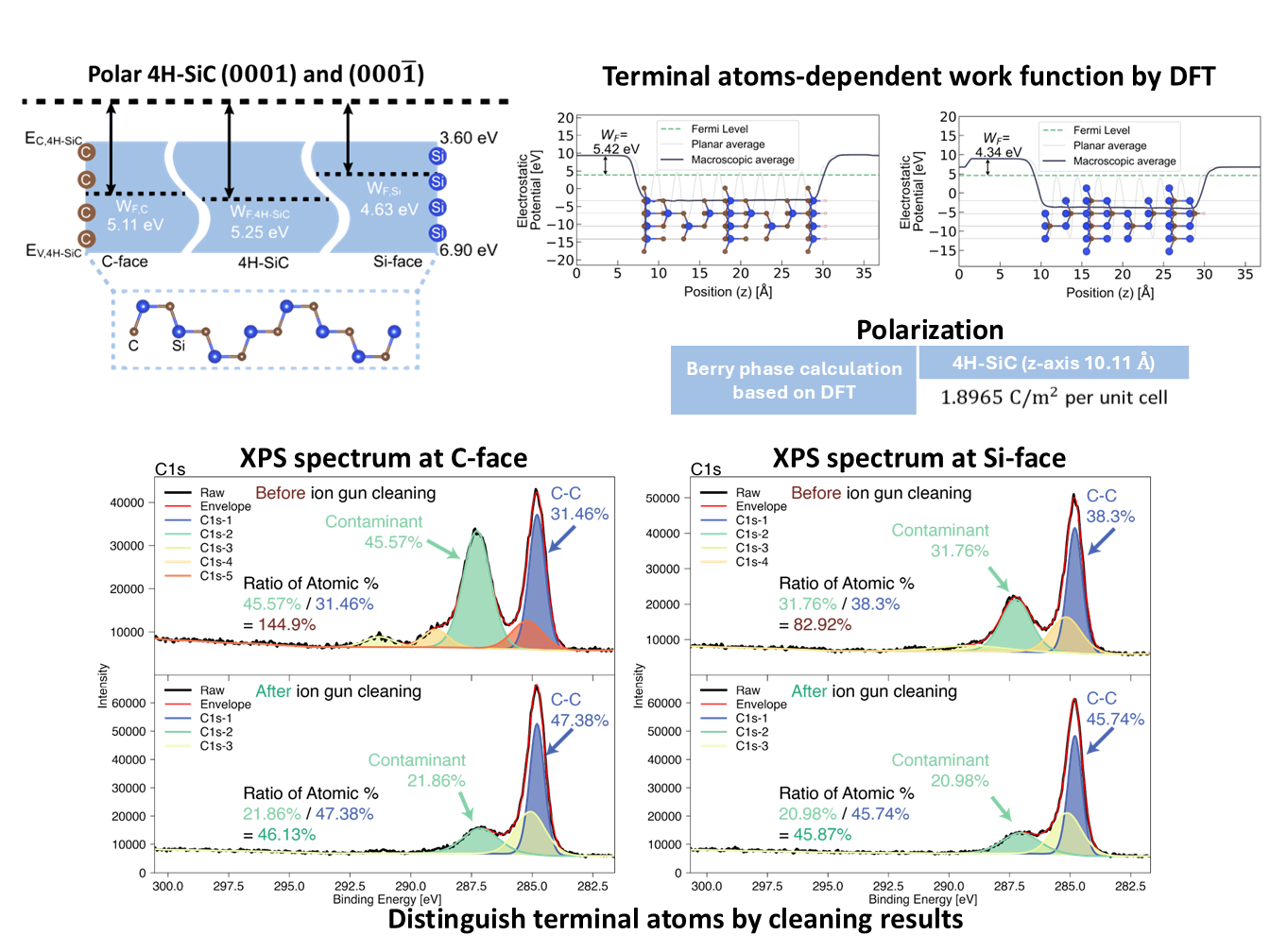
Xi, Y., Li, H., et al., Tailoring 4H-SiC Surface Electronic States by Atomic-Layer Deposition for Ideal Peta-Ohm Resistors. arXiv preprint (2025) Read more
Optics and Photonics
Optical response of advanced materials tunability and photonic applications
Optical response of 2D twisted bilayer graphene
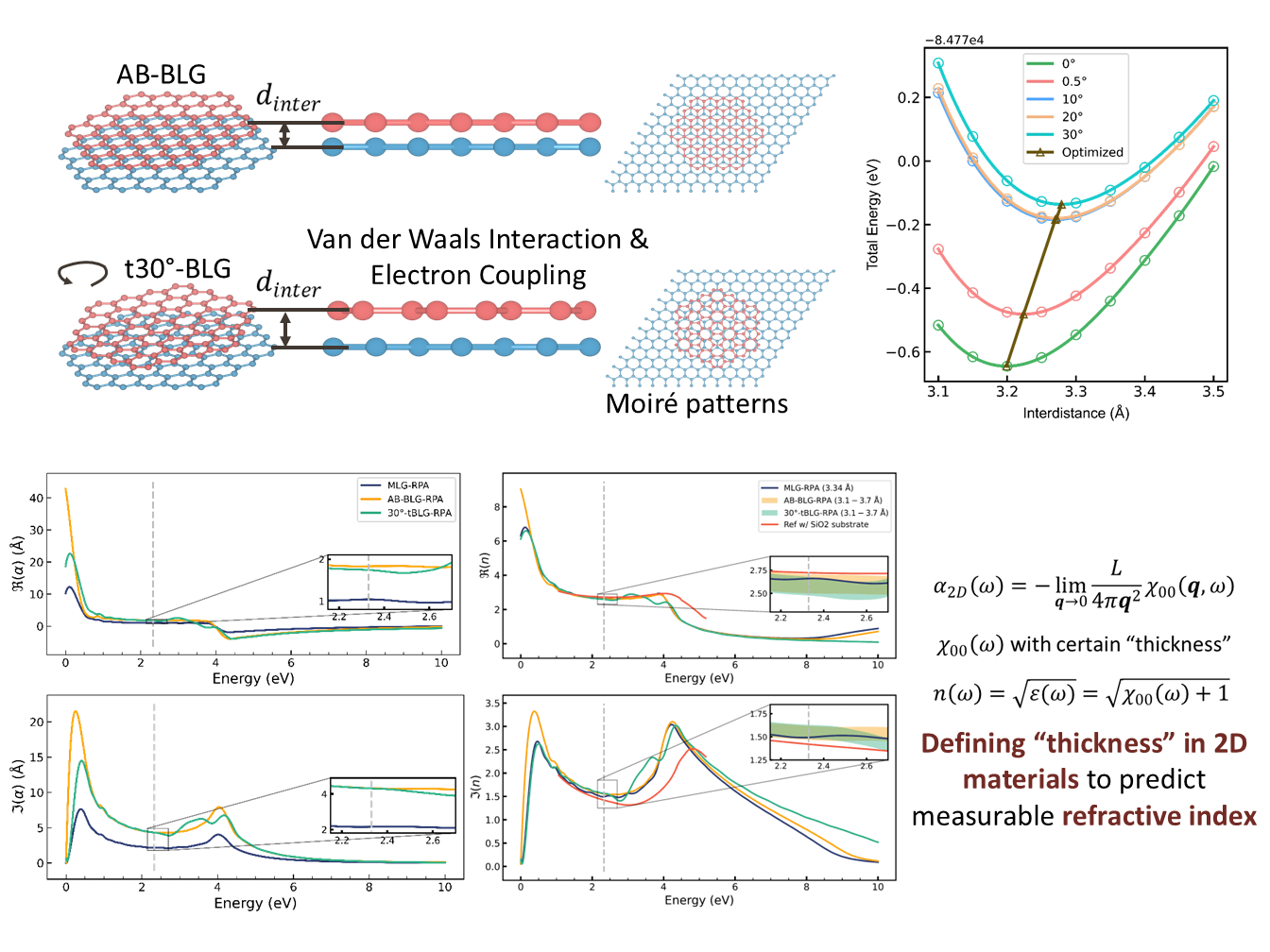
Zhou, N., Huang, T., Li, H., et al., Phase amplification microscopy towards femtometer accuracy. arXiv preprint (2025)
Defect emission of 2D hBN by plasma bombardment
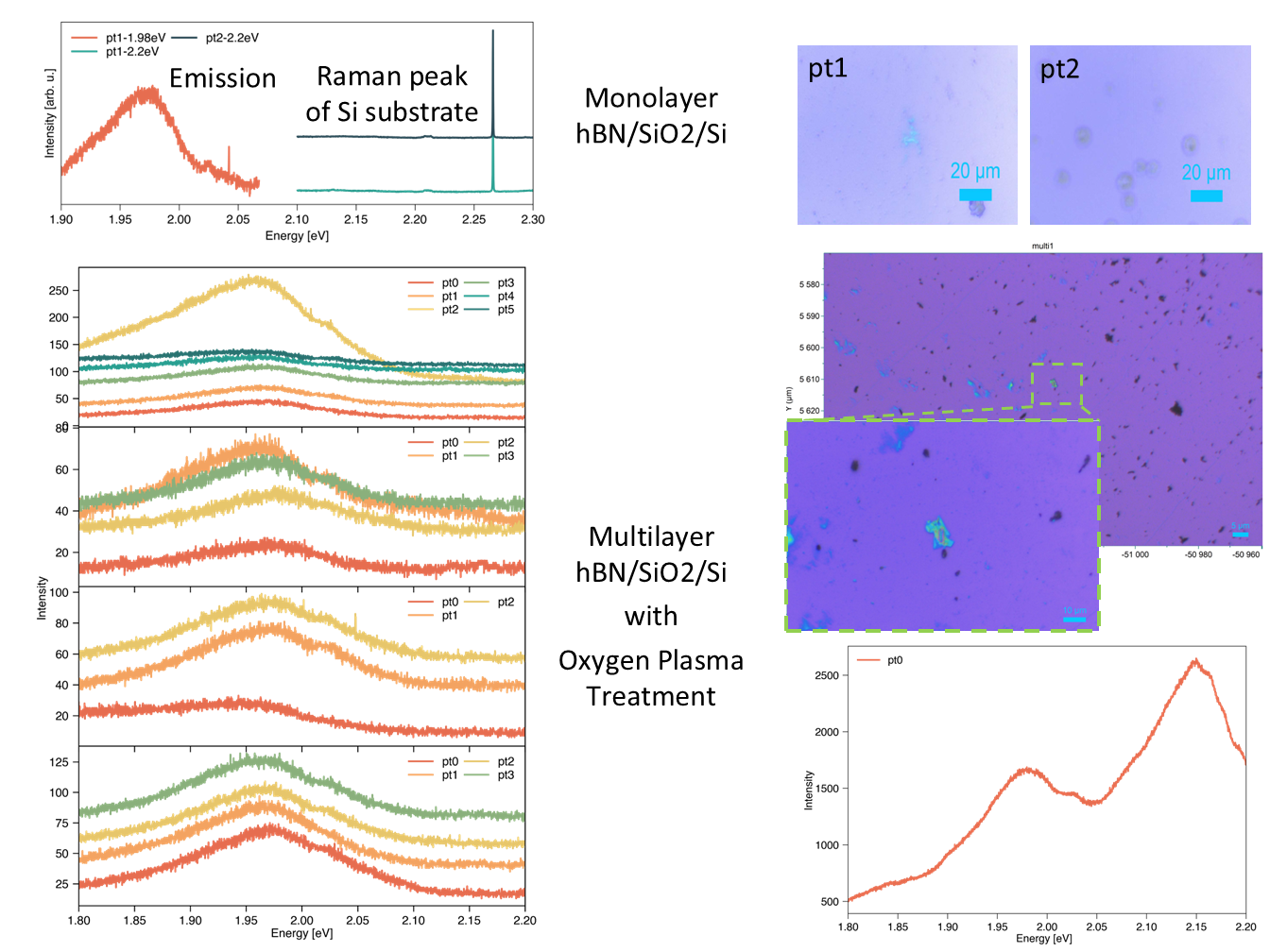
Soft materials, Electrochemistry and interface sensing
Multiple applications of soft materials in thermal energy harvesting, sweat sensor, and ultrasound manipulating
Ionic hydrogel for thermal energy harvesting
We uncovered a novel n-type thermogalvanic redox couple of Cu2+/+ stabilized by Cl-, exhibiting exceptional performance in output power and thermopower compared with reported n-type i-TE systems.
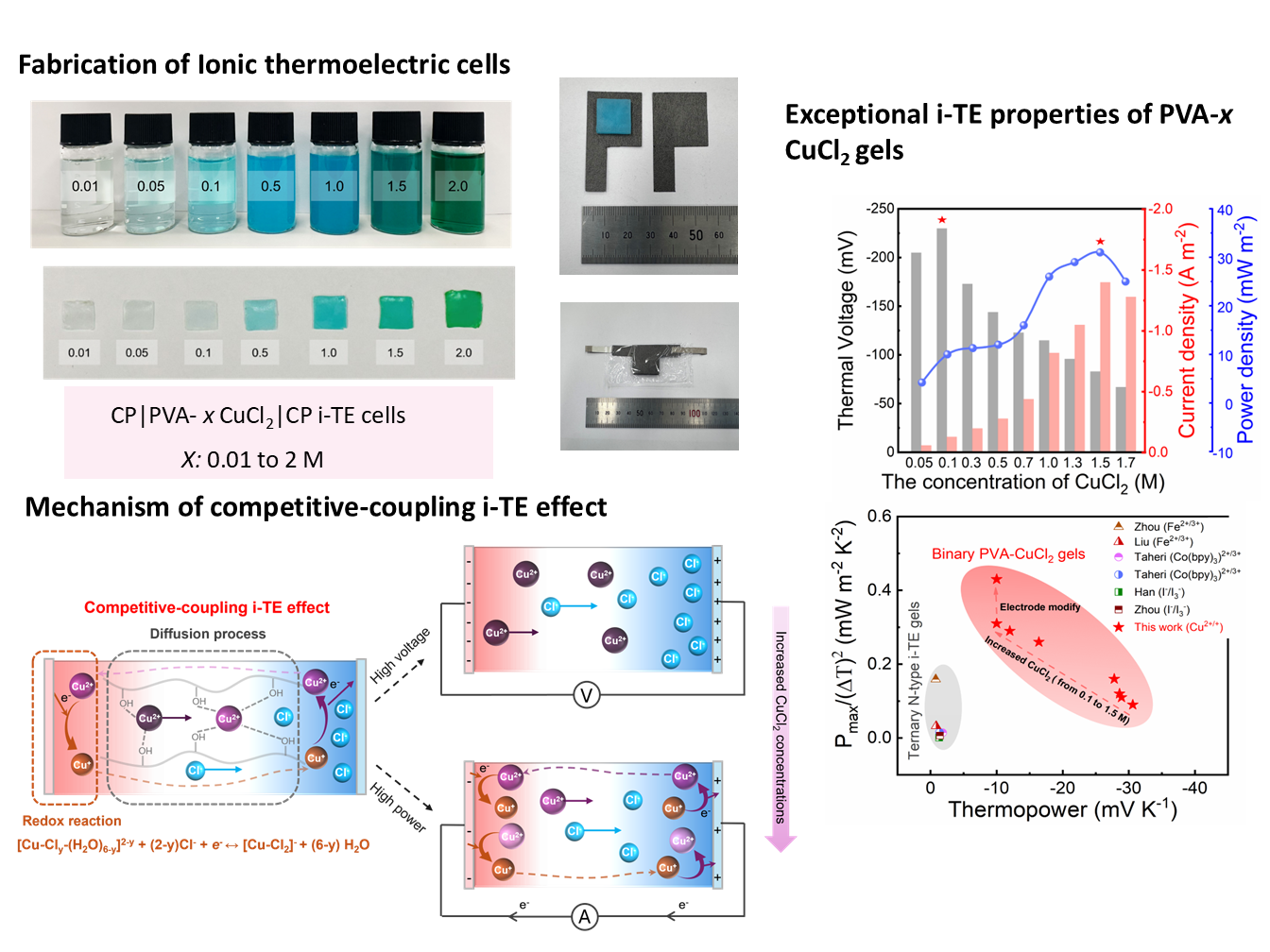
Then we reported a novel competitive-coupling mechanism driven by speciation in binary n-type PVA-CuCl2 gels. This mechanism leads to an enhanced thermogalvanic effect with increasing CuCl2 concentrations while suppressing the thermodiffusion.
Our experimental characterization, combining SHINERS with surface analytical XPS characterization, is readily adaptable to other redox reaction-active hydrogels or soft-material systems, enabling precise mapping of both coordination and electronic states under operando conditions.
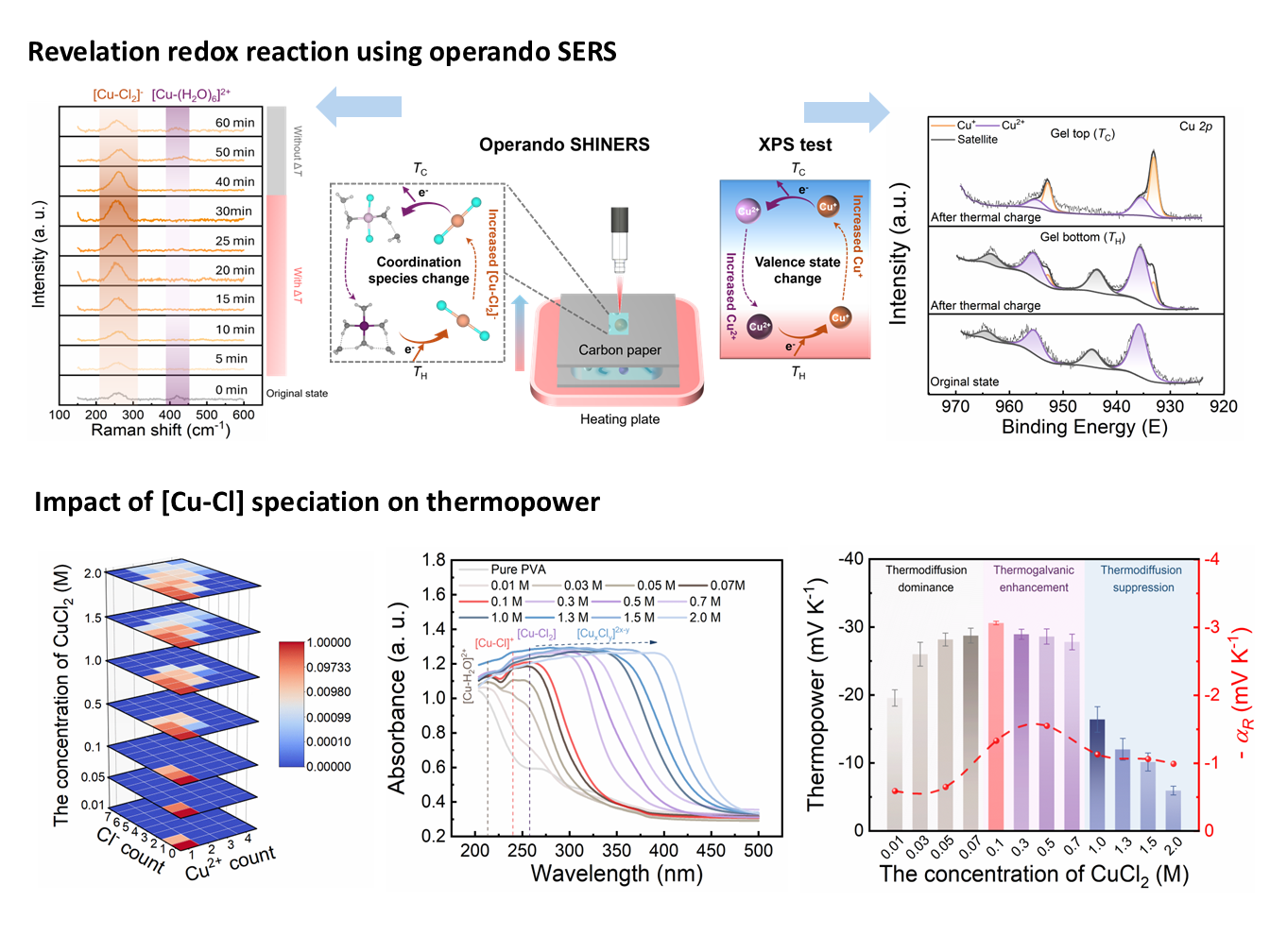
This competition driven by speciation explains the non-monotonic trend in thermopower, showing a maximum value of -30.6 mV K-1 at x = 0.1 M. Our findings demonstrate a novel competitive-coupling i-TE mechanism guided by coordination chemistry, offering a universal design principle for high-performance thermal-to-energy conversion systems.
Hydrogel sweat sensor for noninvasive diagnosis
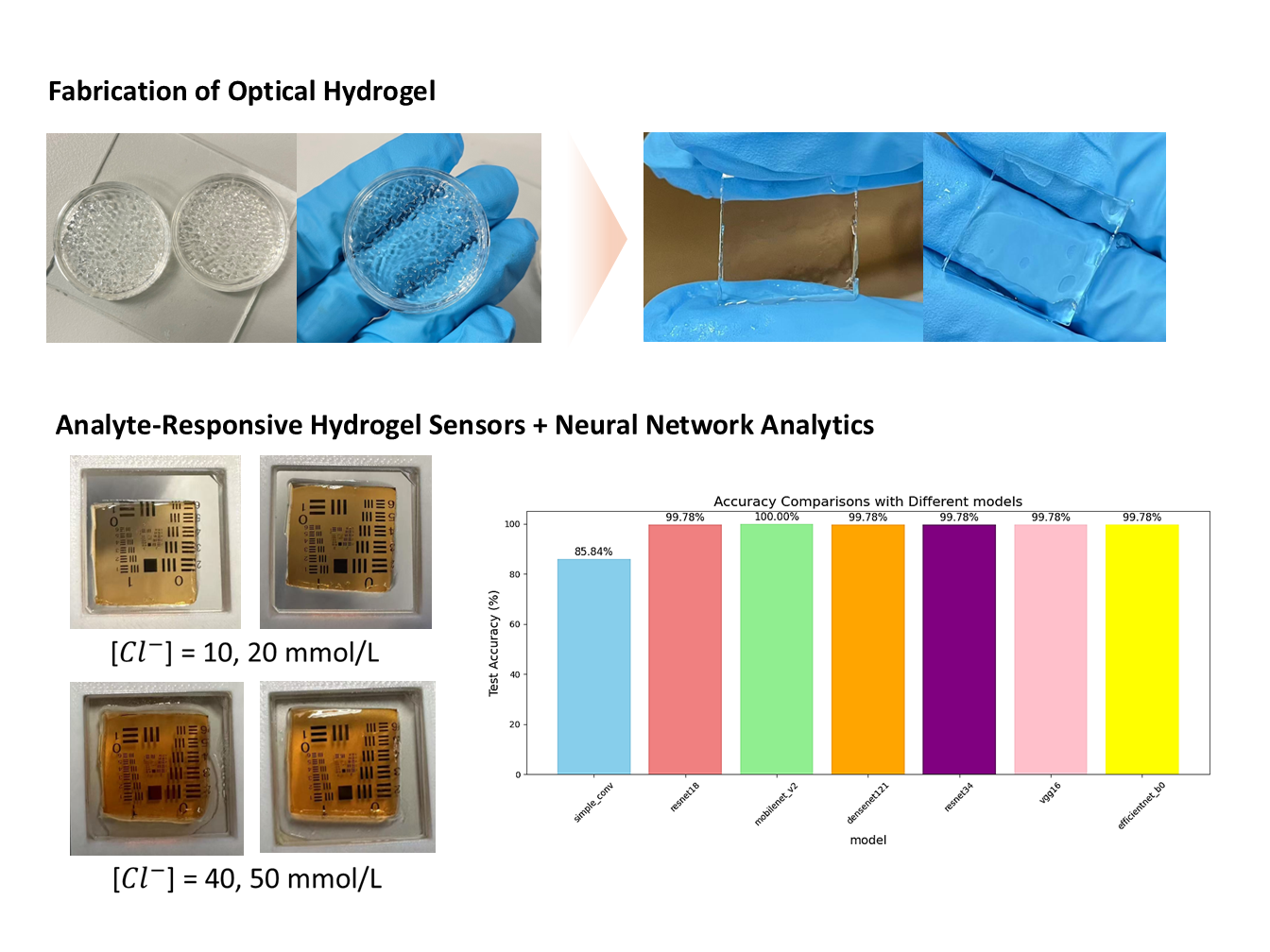
Thermal hydrogels surpass UV-polymerized in uniformity yet struggle with rough surfaces. Our optimized method yields smooth, optically clear high-n films via simple, equipment-free synthesis.
- Hydrogel patch enables sweat uptake with sensitive biomarker recognition.
- Excellent imaging optical clarity.
- NN achieves near-perfect accuracy (>99.9%) in biomarker concentration detection.